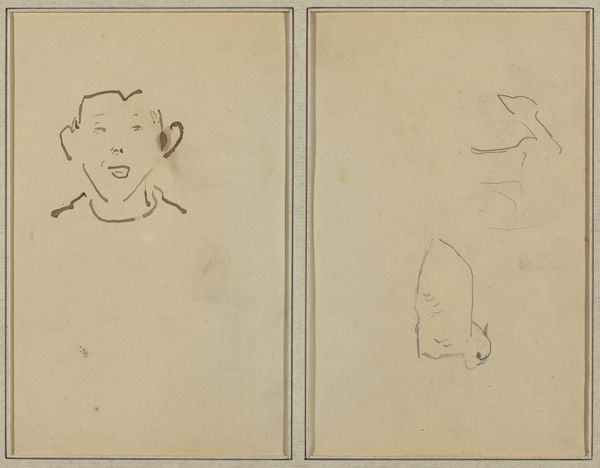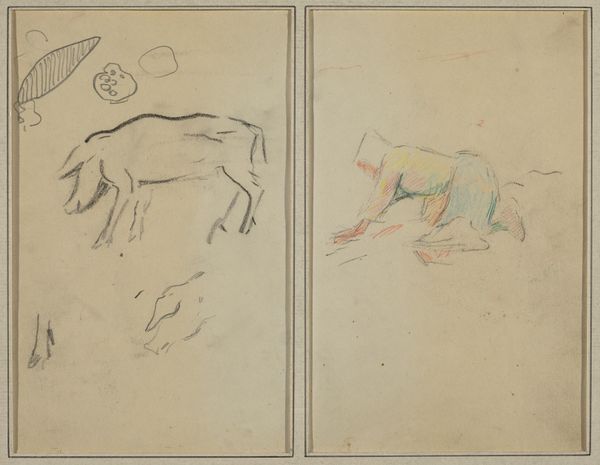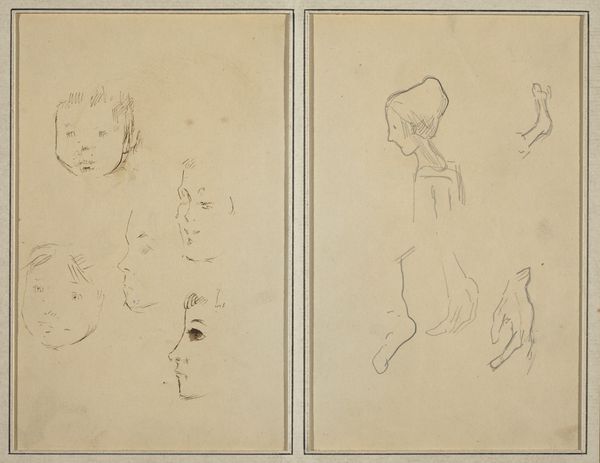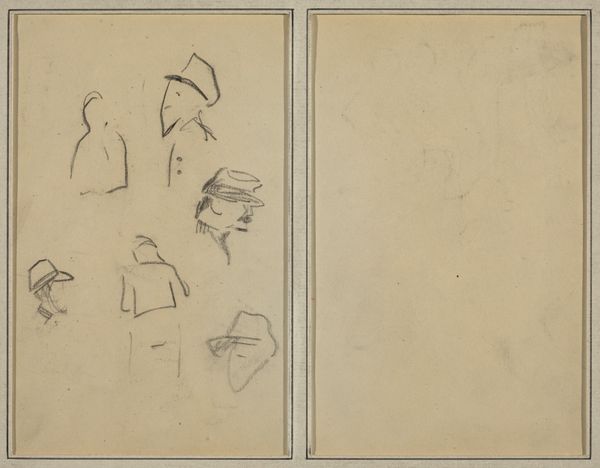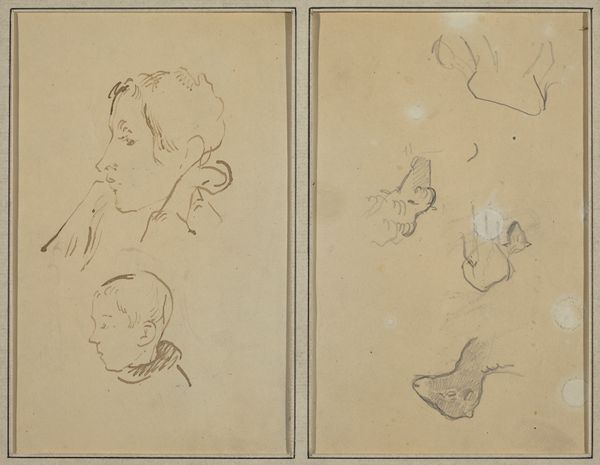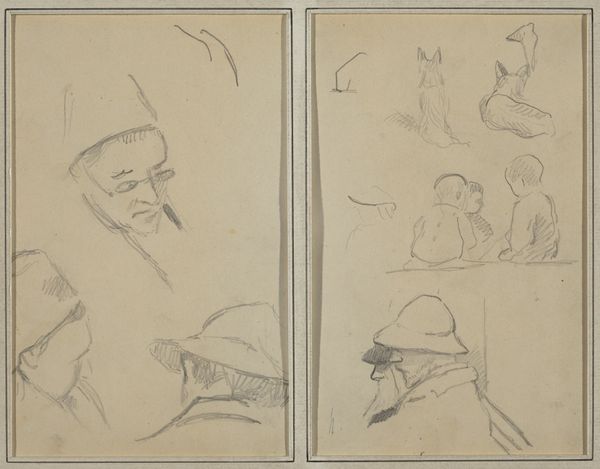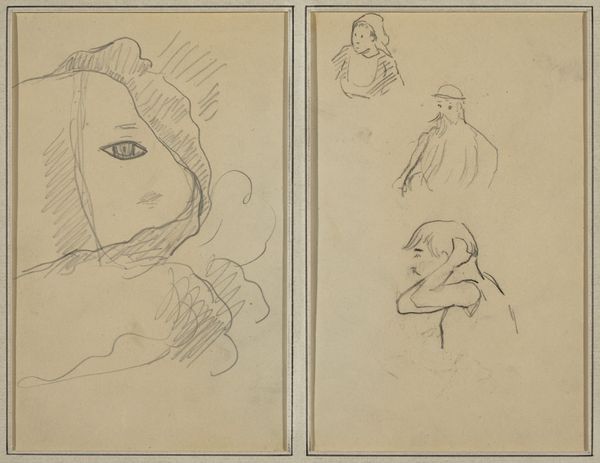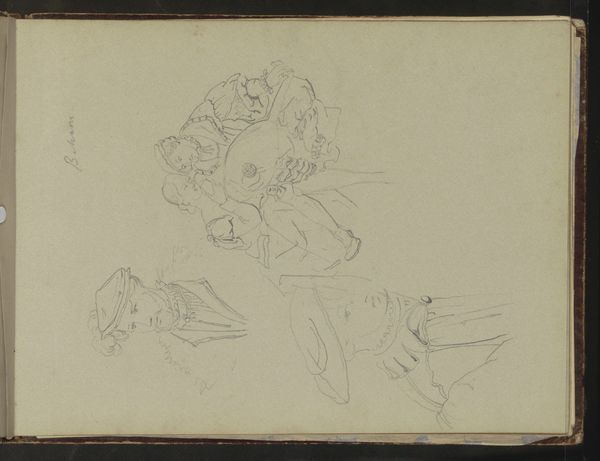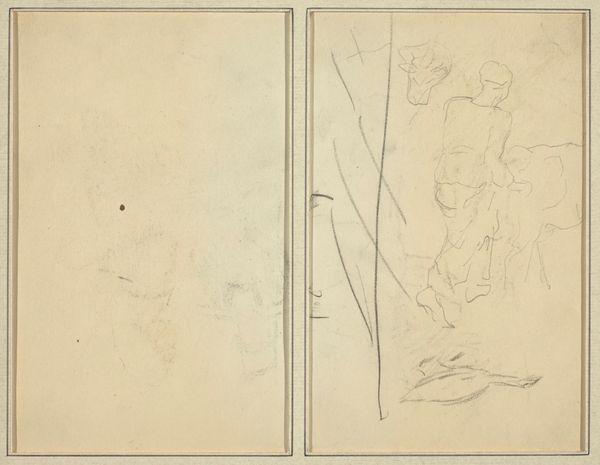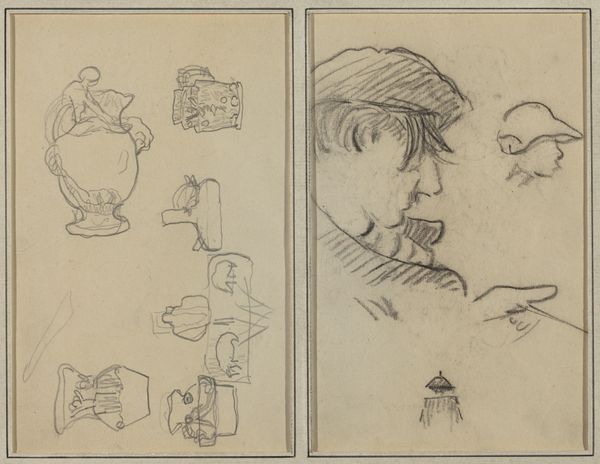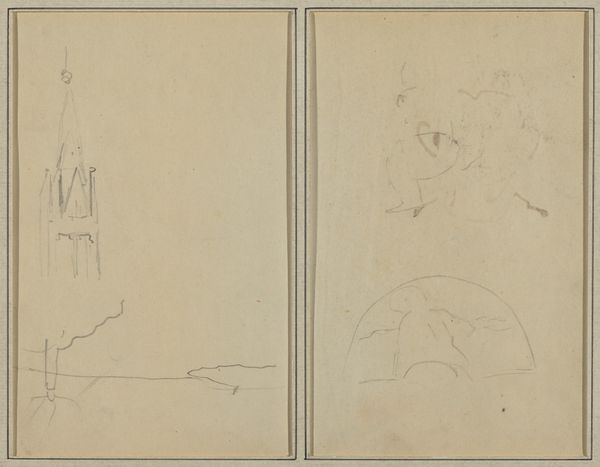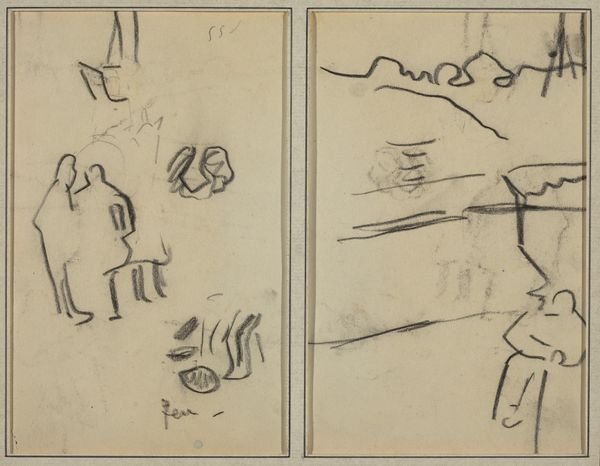![Man Playing Piano; Two Sheep [verso] by Paul Gauguin](/_next/image?url=https%3A%2F%2Fd2w8kbdekdi1gv.cloudfront.net%2FeyJidWNrZXQiOiAiYXJ0ZXJhLWltYWdlcy1idWNrZXQiLCAia2V5IjogImFydHdvcmtzL2MzYmIxYjY3LTVlNTEtNDA3My1hNGM3LTI0ODFmZTE4NjMxYi9jM2JiMWI2Ny01ZTUxLTQwNzMtYTRjNy0yNDgxZmUxODYzMWJfZnVsbC5qcGciLCAiZWRpdHMiOiB7InJlc2l6ZSI6IHsid2lkdGgiOiAxOTIwLCAiaGVpZ2h0IjogMTkyMCwgImZpdCI6ICJpbnNpZGUifX19&w=3840&q=75)
drawing, paper, pencil
#
portrait
#
drawing
#
animal
#
impressionism
#
landscape
#
figuration
#
paper
#
pencil
Dimensions: overall: 16.9 x 22.6 cm (6 5/8 x 8 7/8 in.)
Copyright: National Gallery of Art: CC0 1.0
Editor: This is "Man Playing Piano; Two Sheep," a pencil drawing by Paul Gauguin from around 1884 to 1888. It’s interesting, almost like two separate thoughts captured on one page. What strikes you when you look at this? Curator: What I find captivating is the duality. The man playing piano evokes culture, perhaps the leisure of bourgeois life, a common Impressionist theme. Yet, on the verso, we see sheep, animals associated with simpler, rural existences. Editor: That contrast is compelling. It's like two worlds existing side-by-side. Curator: Exactly. The sheep in art can symbolize innocence, passivity, a connection to the land. Placing these images together, Gauguin might be hinting at a tension, a yearning, or perhaps the fragmented nature of modern identity. Does the pianist feel a longing for the pastoral idyll represented by the sheep? Or is it a commentary on the constraints of polite society, reflected in the structured act of playing the piano? Editor: That makes me see it differently. Maybe he's contrasting the artificiality of city life with something more natural and authentic? Curator: Precisely. Gauguin's later move to Tahiti suggests his own search for authenticity. This early drawing might contain the seeds of that later artistic quest. Notice how the simple, almost childlike depiction of the sheep contrast with the more developed lines defining the man. Is there a visual hierarchy, a prioritization of one subject over another? Editor: It's funny, at first glance it just seemed like two unrelated sketches, but now it feels loaded with meaning! Curator: Art often hides its depth beneath a simple surface. These images speak to the power of juxtaposition and the lasting echoes of our cultural past.
Comments
No comments
Be the first to comment and join the conversation on the ultimate creative platform.

